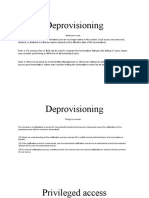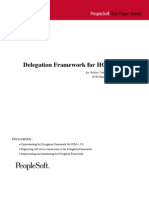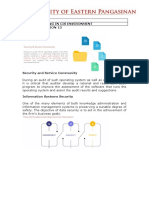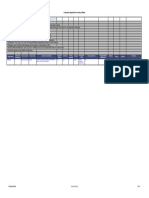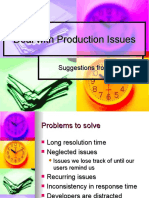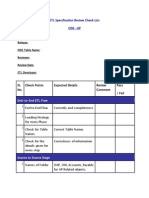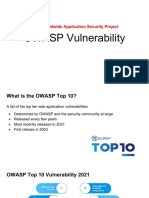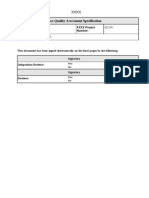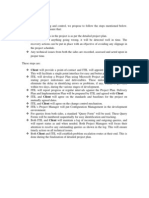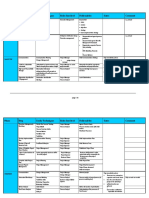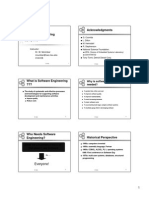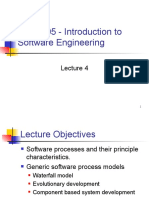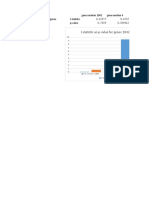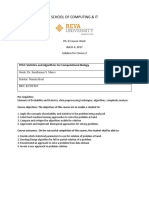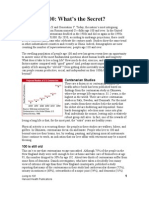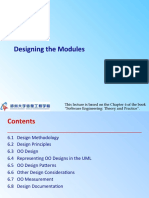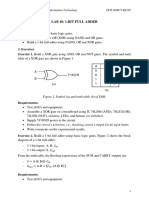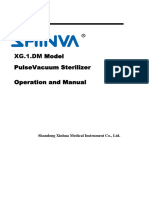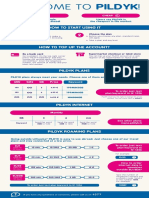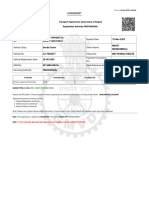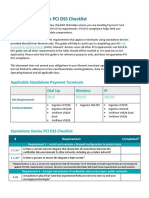SOFTWARE PROCESS MODELS
Copyright K.Goseva 2006
CS 230 Introduction to Software Engineering
Slide 1
�Software Process Models
Process model (Life-cycle model) - steps through
which the product progresses
Requirements phase Specification phase Design phase Implementation phase Integration phase Maintenance phase Retirement
Copyright K.Goseva 2006
CS 230 Introduction to Software Engineering
Slide 2
�Overview
Different process models
Build-and-fix model Waterfall model Incremental model Evolutionary process models
o Rapid prototyping model o Spiral model
Agile process models
o Extreme programming
Synchronize-and-stabilize model Object-oriented life-cycle models
o Fountain Model o Unified Process
Copyright K.Goseva 2006
CS 230 Introduction to Software Engineering
Slide 3
�Build-and-Fix Model
Problems
No specifications No design
Totally unsatisfactory
High cost Difficult maintenance
Copyright K.Goseva 2006
CS 230 Introduction to Software Engineering
Slide 4
�Waterfall Model
Only model widely used
until early 1980s
Characterized by
Feedback loops Documentation-driven
Copyright K.Goseva 2006
CS 230 Introduction to Software Engineering
Slide 5
�Waterfall Model (contd)
Advantages
Enforces disciplined approach
o Documentation for each phase o Products of each phase checked by SQA group
Maintenance is easier
o Every change reflected in the relevant documentation
Disadvantages
Working version of the software will not be available until late in the project time-span Specifications are long, detailed, written in a style unfamiliar to the client Blocking states some project team members must wait for other team members to complete dependent tasks
Copyright K.Goseva 2006 CS 230 Introduction to Software Engineering Slide 6
�Incremental Model
Divide project into
builds modules interacting to provide a specific functionality
Typical product 5 to 25 builds
Copyright K.Goseva 2006
CS 230 Introduction to Software Engineering
Slide 7
�Incremental Model (contd)
Waterfall and rapid prototyping models
Deliver complete product at the end
Incremental model
Deliver portion of the product at each stage
Advantages
Less traumatic Smaller capital outlay, rapid return on investment Open architecturemaintenance implications
Disadvantages
Easily can degenerate into build-and-fix model Contradiction in terms
Copyright K.Goseva 2006 CS 230 Introduction to Software Engineering Slide 8
�Incremental Model (contd)
Concurrent incremental model
more risky version pieces may not fit
Copyright K.Goseva 2006
CS 230 Introduction to Software Engineering
Slide 9
�Rapid Prototyping Model
First step - construct
the prototype as rapidly as possible
Only those aspects of the software that will be visible to the customer/user
Linear model no
feedback loops
Copyright K.Goseva 2006
CS 230 Introduction to Software Engineering
Slide 10
�Rapid Prototyping Model (contd)
Rapid prototype
Used in the requirements phase Evaluated by the customer/user Then, it is discarded - do not turn into product
Rapid prototyping model is not proven and has its
own problems
Possible solution
o Rapid prototyping for defining requirements o Waterfall model for rest of life cycle
Copyright K.Goseva 2006
CS 230 Introduction to Software Engineering
Slide 11
�Spiral Model
Minimize risk via the use
of prototype and other means
Simplified form - Waterfall model plus risk analysis
Precede each phase by
Alternatives Risk analysis
Follow each phase by
Evaluation Planning of next phase
Copyright K.Goseva 2006 CS 230 Introduction to Software Engineering Slide 12
�Simplified Spiral Model
If risks cannot be
resolved, project may be terminated immediately
Copyright K.Goseva 2006
CS 230 Introduction to Software Engineering
Slide 13
�Full Spiral Model (contd)
Radial dimension
Angular dimension
- cumulative cost to date - progress through the spiral
Copyright K.Goseva 2006
CS 230 Introduction to Software Engineering
Slide 14
�Analysis of Spiral Model
Strengths
Answers the question How much to test ? in terms of risk No distinction between development and maintenance (another cycle of the model)
Weaknesses
Internal (in-house) development only
o For contract software, all risk analysis must be performed before the contract is signed, not in the spiral model
Large-scale software only
o For small software performing risk analysis would significantly affect the profit potential
Copyright K.Goseva 2006
CS 230 Introduction to Software Engineering
Slide 15
�Agile Process Models
Agile software engineering combines a philosophy
and a set of development guidelines Philosophy
o Encourages customer satisfaction and early incremental delivery of the software o Small highly motivated project teams o Informal methods o Minimal software engineering work products o Overall development simplicity
Development guidelines
o Stress delivery over analysis and design o Active and continuous communication between developers and customers
Copyright K.Goseva 2006 CS 230 Introduction to Software Engineering Slide 16
�Agile Process Models (contd)
There are many agile process models
Extreme Programming (XP) Adaptive Software Development (ASD) Dynamic System Development Method (DSDM) Scrum Crystal Feature Driven Development (FDD) Agile Modeling (AM)
Reading: Choose Agile Methods from http://www.computer.org/portal/site/seportal/index.jsp
Copyright K.Goseva 2006 CS 230 Introduction to Software Engineering Slide 17
�Extreme Programming (XP)
Somewhat controversial new approach; variation of the
incremental model
First step
Determine features that client wants (stories) Estimate duration and cost of each feature
Client selects stories for each successive build Each build is divided into tasks Test cases for a task are drawn up Pair programming working with a partner on one screen Continuous integration of tasks
Copyright K.Goseva 2006
CS 230 Introduction to Software Engineering
Slide 18
�Extreme Programming (contd)
http://www.extremeprogramming.org/
Copyright K.Goseva 2006
CS 230 Introduction to Software Engineering
Slide 19
�Features of XP
Computers are put in center of large room lined
with cubicles Client representative works with the XP team at all the times Individual cannot work overtime for 2 successive weeks There is no specialization
all members of the XP team work on specification, design, code, and testing
There is no overall design phase before various
builds are constructed refactoring
Copyright K.Goseva 2006
CS 230 Introduction to Software Engineering
Slide 20
�Features of XP
Advantages
Useful when requirements are vague or changing Emphasis on teamwork and communication Programmer estimates before committing to a schedule Continuous measurement; frequent, extensive testing
Disadvantages
Limited to small products and small teams - can be disastrous when programs are larger than a few thousand lines of code or when the work involves more than a few people. Lack of design documentation Lack of a structured review process
Copyright K.Goseva 2006
CS 230 Introduction to Software Engineering
Slide 21
�Synchronize-and-Stabilize Model
Microsofts life-cycle model version of
incremental model
Requirements analysis interview potential
customers; list of features with priorities
Draw up specifications Divide project into 3 or 4 builds Each build is carried out by small teams working
in parallel
Copyright K.Goseva 2006
CS 230 Introduction to Software Engineering
Slide 22
�Synchronize-and-Stabilize Model (contd)
At the end of the day synchronize (put together
partially completed components; test and debug) remaining faults; freeze build)
At the end of the build stabilize (fix the Advantages
Components always work together Early insights into operation of product Model can be used even the initial specification is incomplete
Copyright K.Goseva 2006
CS 230 Introduction to Software Engineering
Slide 23
�Object-Oriented Life-Cycle Models
Need for iteration within and between phases
Fountain model Unified software development process
All incorporate some form of
Iteration Parallelism Incremental development
Copyright K.Goseva 2006
CS 230 Introduction to Software Engineering
Slide 24
�Fountain Model
Overlap (parallelism) Arrows (iteration) Smaller maintenance
circle
Copyright K.Goseva 2006
CS 230 Introduction to Software Engineering
Slide 25
�Unified Process
Unified process is a framework for OO software
engineering using UML (Unified Modeling Language)
Book by Ivar Jacobson, Grady Booch, and James Rumbaugh (1999)
Unified process (UP) is an attempt to draw on the
best features and characteristics of conventional software process models, but characterize them in a way that implements many of the best principles of agile software development
Copyright K.Goseva 2006
CS 230 Introduction to Software Engineering
Slide 26
�Unified Process: Phases
Inception phase
Encompasses the customer communication and planning activities Rough architecture, plan, preliminary use-cases
Elaboration phase
Encompasses the customer communication and modeling activities Refines and expands preliminary use-cases Expands architectural representation to include: use-case model, analysis model, design model, implementation model, and deployment model The plan is carefully reviewed and modified if needed
Construction phase
Analysis and design models are completed to reflect the final version of the software increment Using the architectural model as an input develop or acquire the software components, unit tests are designed and executed, integration activities are conducted Use-cases are used to derive acceptance tests
Copyright K.Goseva 2006 CS 230 Introduction to Software Engineering Slide 27
�Unified Process: Phases
Transition phase
Software is given to end-users for beta testing User report both defects and necessary changes Support information is created (e.g., user manuals, installation procedures) Software increment becomes usable software release
Production phase
Software use is monitored Defect reports and requests for changes are submitted and evaluated
Copyright K.Goseva 2006
CS 230 Introduction to Software Engineering
Slide 28
�Unified Process: Major work products
Inception phase
Vision document Initial use-case model Initial project glossary Initial business case Initial risk assessment Project plan phases and iterations Business model if necessary One or more prototypes
Elaboration phase
Use-case model Supplementary requirements, including non-functional Analysis model Software architecture description Executable architectural prototype Preliminary design model Revised risk list Project plan including iteration plan adapted workflows milestones technical work products Preliminary user manual
Copyright K.Goseva 2006
CS 230 Introduction to Software Engineering
Slide 29
�Unified Process: Major work products
Construction phase
Design model Software components Integrated software increment Test plan and procedure Test cases Support documentation user manuals installation manuals description of current increment
Transition phase
Delivered software increment Beta test reports General user feedback
Copyright K.Goseva 2006
CS 230 Introduction to Software Engineering
Slide 30
�Conclusions
Different process models, each with its own
strengths and weaknesses
Criteria for deciding on a model include
Organization Its management style Skills of the employees Product nature
Copyright K.Goseva 2006
CS 230 Introduction to Software Engineering
Slide 31
